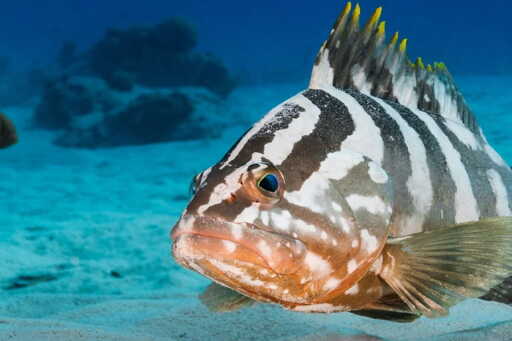HOPKINS, Belize — The Nassau grouper is drawn by the winter moon, between December and March, to special places where hundreds of the cryptic fish engage in a reproductive dance that sometimes lasts days. Northeast Point at Glover’s Reef Atoll, off the coast of southern Belize, is one of those places. The Nassau grouper (Epinephelus striatus) is a large-bodied, top-level predatory reef fish. Its pale tan to reddish-brown body with five dark vertical bars makes it easily recognizable. While these fish hide well, spending their days lounging in reef crevices and only emerging to feed at night, their highly predictable spawning aggregations make for an easy catch for opportunistic fishers. The species was once the most abundant and commercially important fish in the Caribbean. In Belize, fisheries records indicate that Nassau grouper was the most-caught fish during the 1960s, with estimated catches of more than 30,000 fish per year from a single aggregation site, Caye Glory. Northeast Point is one of Belize’s 13 officially recognized fish spawning aggregation (FSA) sites for Nassau grouper. The aggregation there was also once an impressive sight, drawing an estimated 15,000 fish in 1975. Today, that moonlit annual gathering has all but vanished. The number of fish attending has declined by 85% over the past two decades and is now “on a trajectory towards local extirpation,” according to a recent study. It attributes the decline to the government’s limited capacity to enforce regulations aimed at protecting the groupers from fishing at this remote site. “Since…This article was originally published on Mongabay
From Conservation news via this RSS feed


